Coming a long way from where it started, skateboarding has now become a lifestyle sport rather than just a cultural one. The sport first lifted off in California in the 1950s when surfers wanted to have a similar experience of surfing on land when the tides were low.
The innovative minds of the enthusiasts came up with the idea of attaching metal wheels to surfboards, pieces of wood, or simply cardboard. But who knew this primitive approach was just an ignition to one of the slickest sports of the century?
Table of Contents
Skateboards Evolution
Do you know the skateboards you see today on the market are different from how they were when the sport kicked off? Like every other sport, skateboarding also progressed with time.
If you want to know the complete journey, here’s a brief history of skateboarding, how it evolved, and the main events that took place until now.
Vintage Skateboard Types
With time, there were many innovations, and eventually, the sport evolved and branched off into different styles of skateboarding, like cruising, stunts, vert, and more. And for every style, specific types of vintage skateboards are preferred or rather most suitable.
So without further ado, let’s take you through the different types of vintage skateboards.
The Double-Kick Popsicle Skateboards
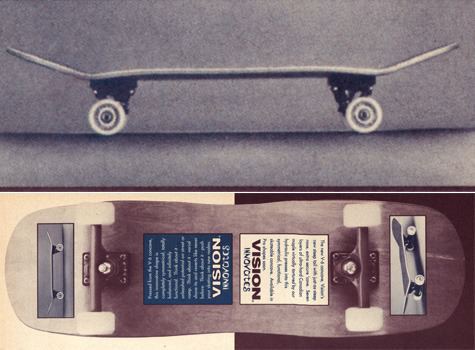
The early stages of skateboarding were just flat decks on skate wheels. But in 1969, Larry Stevenson invented the kick tail design and patented the first innovation of skateboard decks known as double-kick popsicle skateboards.
The name popsicle boards, aka shortboards, came from its popsicle or band-aid-like shape featuring a double kick at either end, known as nose and tail. The whole board featured varying concave across the width with kicked-up ends. Unlike other boards, it was not entirely flat.
These boards were unanimously considered by most skaters worldwide for being the most versatile design, allowing them to adapt to any style. But mainly, double-kick skateboards were preferred for stunts and tricks.
The curves at the ends assisted with better maneuvering, and because of these kicked-up ends, you could pop your board off the ground and perform tricks like nollie, noseslide, or varials. Even today, when it comes to street skateboarding or freestyle skating — double-kick popsicle skateboards are the most popular choice.
Double-kick skateboards are most suitable for: |
Double-kick skateboards are not suitable for: |
● Skating streets, pavements, and curbs |
● Riding long distances |
● Carving |
● Rough surfaces |
● Grinding and vert |
● High-speed rides |
● Downhill skating |
|
● Technical skating |
Cruiser Skateboards
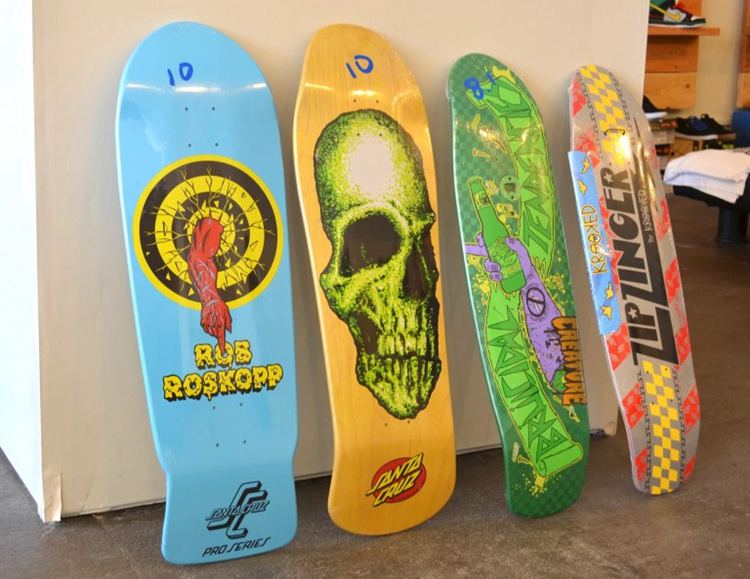
Do you want to travel from point A to point B? Worry not – Cruiser boards got your back. It is how it was back in the 70s when Cruisers were out in the market.
With decks wider than many standard skateboards, Cruiser boards were one-of-a-kind made for cruising down streets, city environments, or any level of the pavement. They had big soft wheels to avoid stumbling, and combined with a wide-deck feature – the riding experience touched peak comfortability.
Moreover, Cruiser boards had asymmetrical shapes featuring a single kick tail, which assisted boarders in performing ollies up a curb without a hassle. Additionally, they were lighter and nimbler, enabling skateboarders to do those sharp city turns smoothly and without applying much force.
With all these characteristics, it was obvious that they were meant for leisurely riding or commuting. However, when it comes to performing tricks or technical riding – you may want to look elsewhere.
Cruiser skateboards are most suitable for: |
Cruiser skateboards are not suitable for: |
● Leisurely riding or commuting in city environments |
● Tricks and technical skating |
● Carving |
● Maneuverability for beginners |
● Sharp turns |
|
● Downhill skating |
|
● Smooth rides on rough surfaces |
Mini Cruiser Skateboards
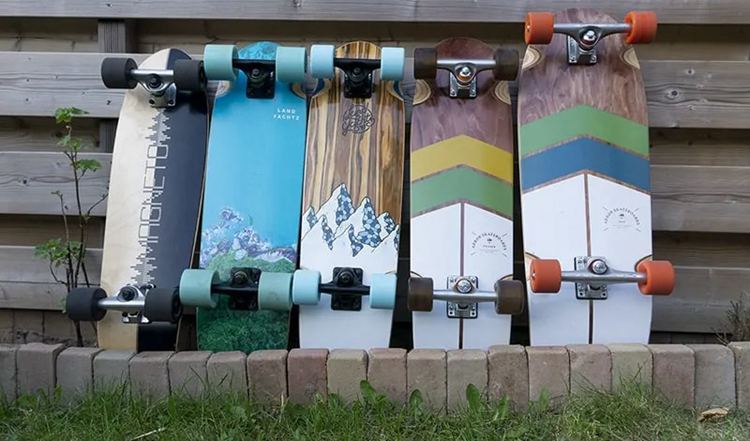
Mini cruisers started emerging in the 1970s, and rightfully, they were the choice of every young beginner enthusiast who was looking to get into the sport.
As the name suggests, Mini cruisers were just a smaller version of Cruiser boards. Other than size, all features were the same. In addition, they were lighter and smaller, making them easy to carry and also suitable for some basic tricks and flips.
Even today, with lots of reissues and improvements in the design, mini cruisers are a complete package for young beginners aged from eight to ten years old. The deck ranges from 6.75 inches to 7.25 inches, the perfect size for a kid to hop on it, master stability, and cruise through the skateparks.
Mini Cruiser skateboards are suitable for: |
Mini Cruiser skateboards are not suitable for: |
● Cruising the streets and skateparks |
● Technical skateboarding |
● Learning balance and stability |
● Riding at high speed |
● Carving |
|
● Downhill racing |
Longboard Skateboards
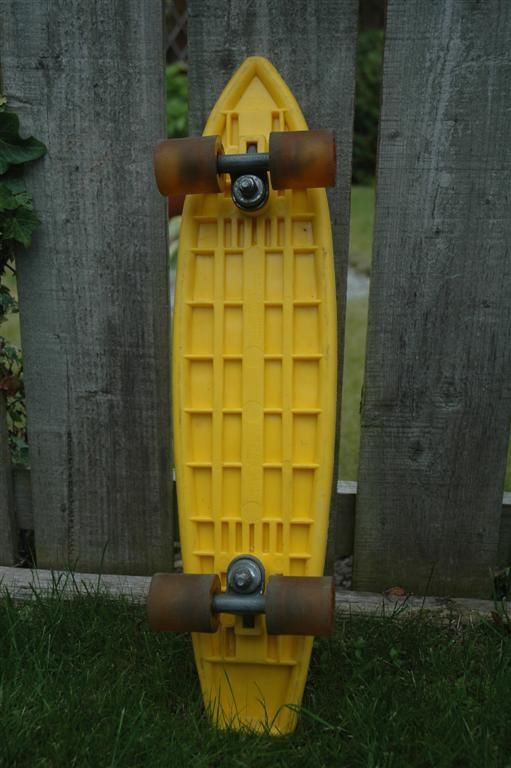
Longboards are one of the earliest designs of skateboarding. With its origins in 1950s Hawaii surfing, the longboards were quite popular on the land for leisurely cruising, downhill riding, or transporting from one place to another.
Longboards lived up to their name, with their decks ranging from 33 inches to 42 inches in length and 8.5 inches to 10 inches in width. Moreover, they offered so much space for foot placement that riders used to cover long distances with ease and comfort.
The boards also came equipped with large soft wheels that supported riders to ride on all kinds of terrains, including rough ones. Moreover, they came in many types over the years, such as pintail, swallowtail, and twin-tip boards.
However, none of them specialize in technical skating or performing tricks. Also, if you are looking for something to maneuver or something more responsive, longboards are not close to what you are seeking. But to speed skate downhill and carry momentum easily, longboards are spot on!
Longboard skateboards are most suitable for: |
Longboard skateboards are not suitable for: |
● Leisurely riding or commuting in city environments |
● Tricks and technical skating |
● Pushing long distances |
● Young enthusiasts |
● More spacious |
|
● Sliding downhills at high speed |
Old-school Skateboards
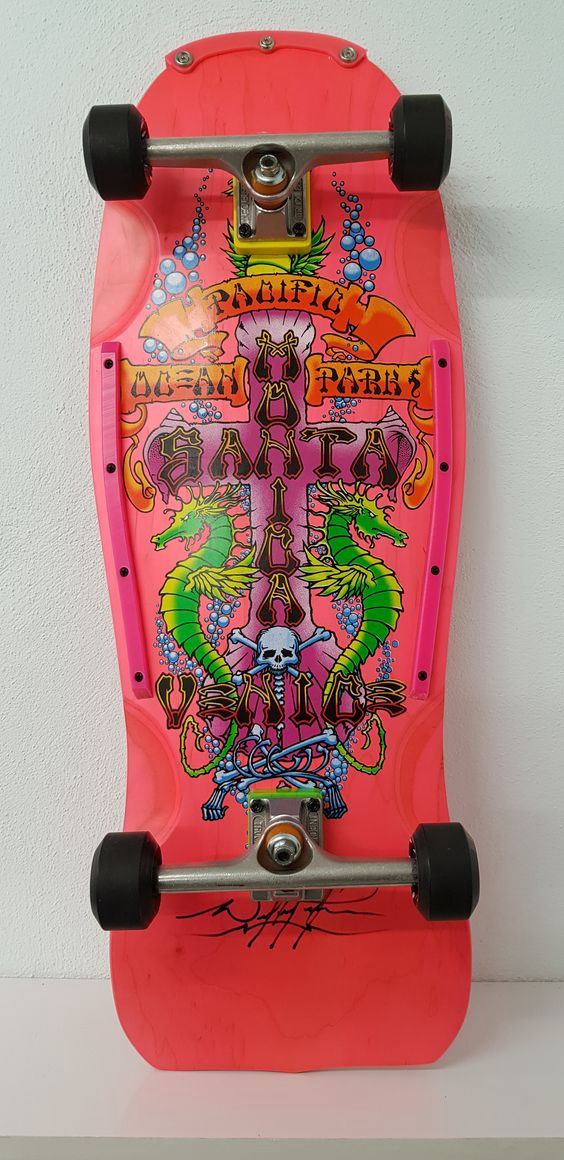
As the name speaks for itself, old-school decks were introduced in the early decades of skateboarding when it was starting to boom. Today, many modern boards have taken over the top stage with better and more developed features than the prior ones. But there was a time when old-school boards were the go-to design for every skateboarder.
Old-school skateboards had an asymmetrical shape – a flat deck with a width of 8.25 inches or more, a narrow nose, and a broad single kick tail to help pop the board in the air for tricks and stunts.
In terms of performance, these skateboards came equipped with wider trucks than standard boards and large soft wheels that offered high speed and made them more stable. They were ideal for skating pools, ramps, and paving through the streets.
However, these skateboards were way heavier than the standard ones, mainly because of the thick and wide decks that came equipped with large trucks. Therefore, they were not popular in performing tricks that involved flights, such as ollies and flips.
Old-school skateboards are suitable for: |
Old-school skateboards are not suitable for: |
● Skating ramps, pool, and vert |
● Technical street skateboarding |
● Cruising |
● Flip tricks |
● Carving |
|
● Downhill riding |
Some Vintage Skateboard Brands
Powell Peralta
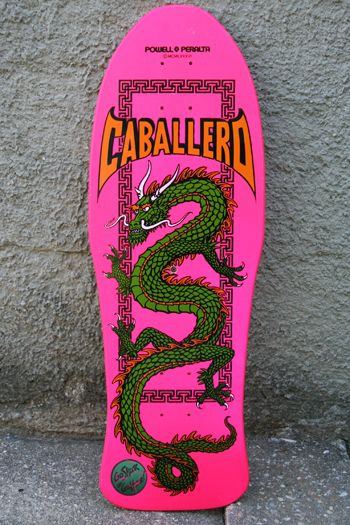
George Powell and Stacy Peralta founded a company in 1978 in Santa Barbara, California, Powell Peralta. They produced skateboards that were the core of the 80s skateboard cultural movement. With some awesome boards and aesthetic skateboard graphics, the company got traction in the 80s.
With over $30 million in sales in a year during their peak, they became one of the best-selling skateboard manufacturers of the era. Despite these numbers, it is uncommon to find a vintage Powell Peralta skateboard on the market.
But luckily, they have started reissuing the vintage skateboards with identical designs and prints but with improved features, giving modern benefits and 80s vibes all in one place.
Santa Cruz
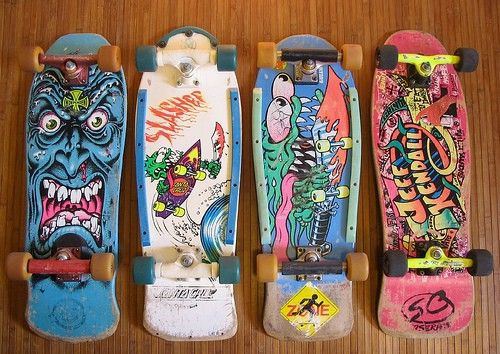
Being one of the oldest skateboard manufacturing brands, Santa Cruz still runs the show with their top-notch boards and dope graphics. Well, speaking of which, who can overlook their iconic screaming hand logo?
The screaming hand logo was one of the propelling factors for riders to get a Santa Cruz board. Apart from artistry, they master manufacturing a phenomenal range of boards with various materials and designs. Their Rob Roskpop boards were one of the cornerstone editions throughout the 80s.
Similar to Powell Peralta, it is quite challenging to find vintage Santa Cruz skateboards. But since they run the show and know the market demands, they have reissued many vintage designs like the Freak 80’s Cruiser and time traveled into the 80s.
Recently, Santa Cruz had a 40th anniversary celebrated with their distribution company. It is just impeccable how they made an empire out of thin air – we hope to be around for its 50th.
Hosoi
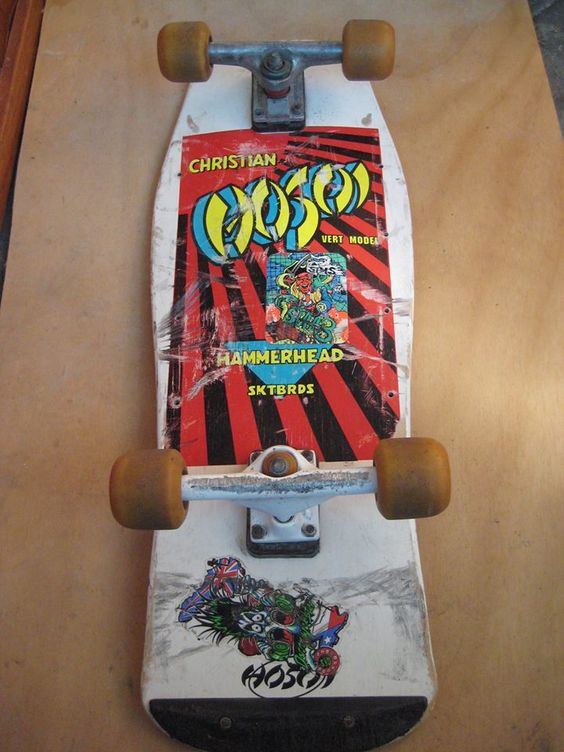
Christian Hosoi was a professional skater who had the smoothest vert style in the entire 80s skate scene. His skateboards were no less. In 1984, he founded Hosoi Skates and produced some best-selling skateboards.
His designs gained popularity as they were old-school but could perform technical tricks. And he often paid homage to his Japanese heritage by featuring a rising sun graphic on the decks.
Hosoi’s innovation of hammerhead skateboards offered a better grabbing surface when performing aerials. While being conscious of what people want, Hosoi made modern-day hammerhead decks identical to the old-school with new features like double kicks. These continuous innovations have kept Hosoi in the game.
Independent Trucks
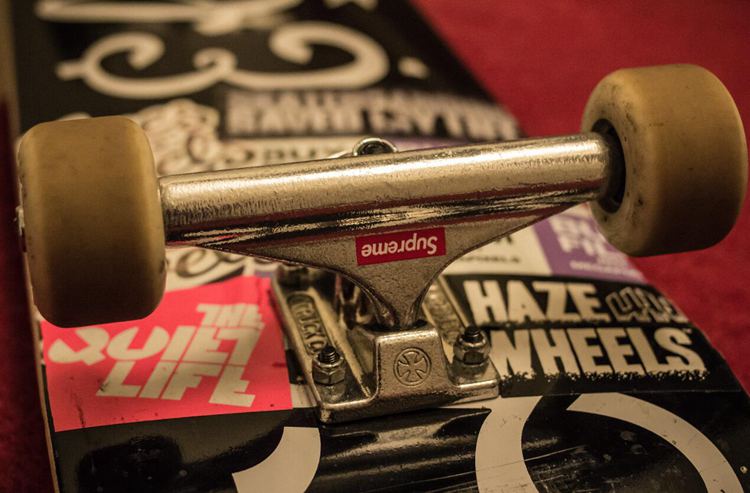
In the late 70s, skateboarding popularity was declining due to BMX bikes, and there was a huge void in the market for quality trucks. It was further discouraging people from joining the sport.
But then, the skateboarding industry was blessed with the Independent Truck company that focused on producing high-end skateboard trucks. The company was established in 1978 in Santa Cruz, California, by Richard Novak, Jay Shiurman, Fausto Vitello, and Eric Swenson.
Before the Independent Trucks company, trucks were cheaply made by toy manufacturers. These trucks provided close to no value, and professional skaters always struggled and were constantly crashing their gears. But Independent Trucks took over the market with a storm of trucks that were more durable and stable than the prior ones.
From 1978 to now, Independent Trucks have released several models and are the only company in the United States that produces quality trucks and nothing else.
Vision Skateboards
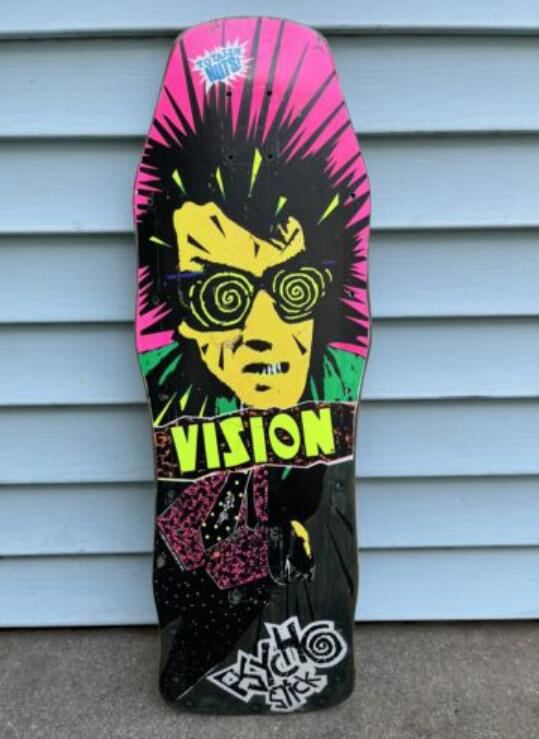
Brad Dorfman founded Vision in 1976 and sponsored one of the pioneers of street skateboarding, Mark Gonzales. Brad Dorfman also owned a clothing brand named Vision Street Wear.
Every brand has its unique theme (the good ones), most of the Vision skateboard decks featured psychedelic prints and graphics, and their most in-demand deck was Psycho Stick. To meet this ever-growing demand for Psycho Stick, they introduced reissues.
The designer of Psycho Stick later disclosed the inspiration behind this design which came from a real person named Gregory, who worked at Vision.
Blind

In 1989, Mark Gonzale founded yet another skateboard brand under the name Blind company. They excelled at manufacturing fine skateboard decks at cheap costs for kids, and their identity was often associated with a cartoonish grim reaper.
Blind used smart marketing tactics to level up their sales. They made lots of films featuring famous skateboarders enjoying the sport. Mark Gonzale featured himself skateboarding in a short movie called Video Days. These marketing strategies compelled young blood towards the sport.
Vintage Skateboards Price Guide
Being a collector of whatever niche, you would require impeccable expertise to get the finest collectible at a fair price. If you lack vigilance, you can either forgo a deal you thought was not good enough but it was, or be vulnerable to the cunningness of con men of the market.
If you are a novice, you need guidance and learning, perhaps a vintage skateboard price guide. So before buying or selling collectible skateboards, keep the following factors in mind.
Material
In the collectible market, you will come across a lot of skateboards ranging from low to high prices. Considering the material, those made from wood or early plastic material with clay or steel wheels are a jackpot. On top of that, if they feature authentic artwork, they will skyrocket in value.
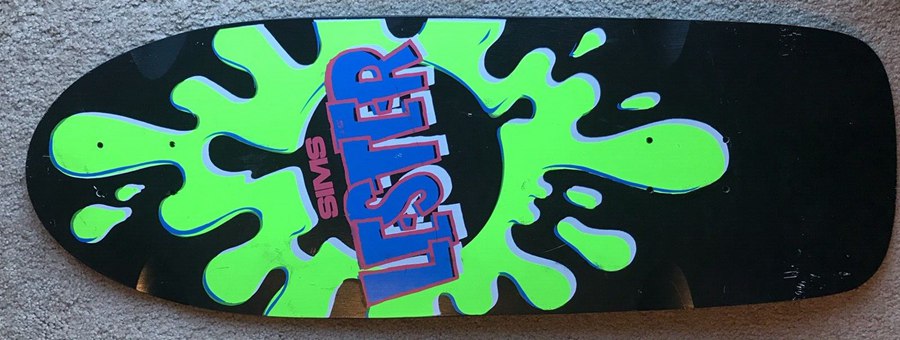
For instance, the Sims Lester Kasai vintage model of 1983 sold for $2,247 on eBay. All bidding was for the “splat” artwork featured on it.
Artistry
You must have seen aesthetically pleasing graffiti on the walls at skateparks, which puts you in awe just by thinking about the effort invested in it. It tells us that art and skateboarding go hand in hand. So when it comes to skateboards, every brand intends to invent unique art prints and stickers to propel enthusiasts toward their product.
The rare collectible skateboards can fetch high bids and be worth a small fortune. The general rule is that the more famous and exclusive the artwork is, the higher the value it can reach.
A recent example is the vintage Santa Cruz Sun God deck nos 80’s skateboard sold for $5,500 on eBay. If you have collectible skateboards with unique artwork, consider listing them on eBay.
Provenance and History
A professional and well-renowned skater, Mike Vallely’s personal-ridden skateboard deck went for $7,200. It had lyrics from his favorite song, Won’t Back Down, written by the musician Top Petty himself.
Provenance is a crucial factor in setting the value of collectibles. Collectible skateboards with unique backgrounds or connected with influential personalities, like Tony Alva, Bam Margera, Tony Hawk, and Elissa Steamer, fetch high prices in the collectible world.
Often it is challenging to prove the provenance of the collectibles. But once you have all the evidence to prove the linkings, you can expect higher demand and price.
Brand
By giving unique and quality products to the market, many early brands from the 70s and 80s have quite made a name for themselves.
Today, vintage skateboards from renowned brands like Powell Peralta, Santa Cruz, and Vision can fetch some high bucks. For instance, the Powell Peralta Vato Rat edition skateboard deck sold for over $10,000 on eBay.
Rarity
We all know the general rule of collectible items, the rarer the item is, the more valuable it is. But how can we know if it is one in a million or one in every shop? To know the rarity of a collectible skateboard, you need to have prior knowledge and experience from spending time in the antique markets.
But if you are a novice, worry not. You can start by doing some online searches here and there to collect relevant information, like the production quantity of the desired collectible.
5 Most Valuable Skateboards Ever
Skateboarding is around 80 years old, and technically you won’t find an antique skateboard (boards older than a century). So we can guess the most valuable skateboards are not valued based on their age but rather popularity. Here is a list of some of the most expensive skateboards ever recorded in history.
1. Blowin’ In The Wind Skateboard
The Blowin’ in the Wind was a symbolic protest song raising a voice for the rights of people, and it also became an anti-war theme. For skateboarders and musicians, breaking the social norm is the way to live. So the Tony Hawk cooperation bridged the two industries by featuring prominent musicians on the skateboard decks.
Similarly, a signed and ridden Jamie Thomas skateboard deck was inscribed with the lyrics of Blowin’ in the Wind by Bob Dylan. With the provenance of Jamie Thomas and the popularity of Bob Dylan’s song, the skateboard sold for $38,425 on Tony Hawk live auction on eBay in 2012, becoming one of the most expensive collectible skateboards.
2. Lasek and Yauch Set
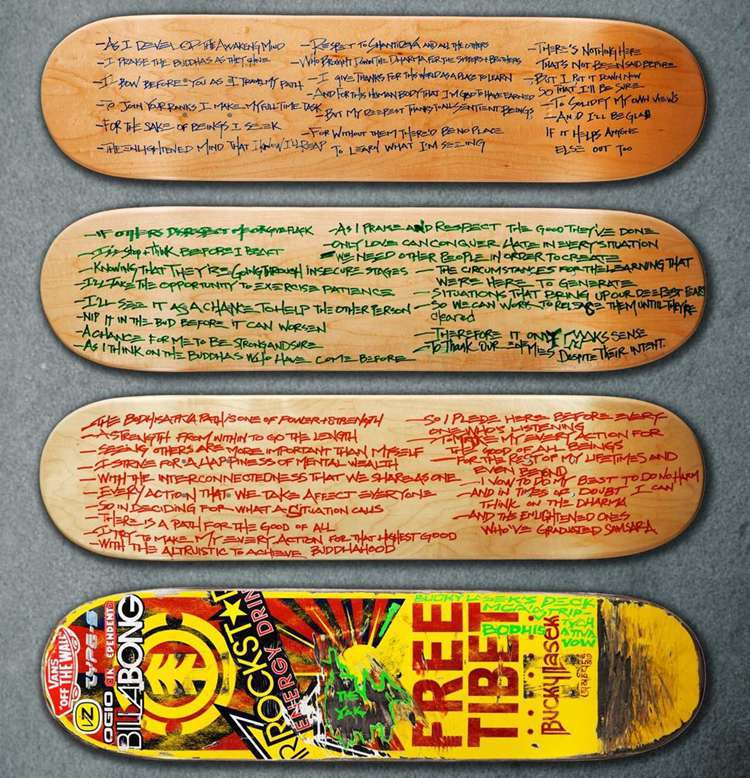
In the same, Tony Hawk auction listing as Bob Dylan’s, Buck Lasek and Adam “MCA” Yauch’s four-board set also sold for $35,000. All decks were signed by the late MCA and inscribed with the lyrics of Bodhisattva Vow, a hit song from the Beastie Boys album.
In case you don’t know about Adam Yauch, he was one of the founders of the rock band — Beastie Boys. Apart from rapping, he was also a bassist, filmmaker, and Buddhist. He lost the battle with parotid cancer and passed away at the age of 47.
3. Tony Hawk Blackbird Board0
Paul McCartney wrote the lyrics of the Beatles’ hit song, Blackbird, on one of Tony Hawk’s skateboards. The board fetched $27,116 at a charity auction led by Tony, making it the third most expensive skateboard ever.
Tony Hawk used this skateboard in Mumbai, India, in 2011 when showcasing his pro skating skills. It was close to him and had his personal decals too. Later, when auctioning, he featured the lyrics and signature of McCartney to push up the value.
4. Santa Cruz Rob Roskopp Skateboard
With his popularity spread worldwide, Rob Roskopp was a skating legend throughout the 80s. He was part of the Santa Cruz corporation, and his vintage Santa Cruz Rob Roskopp skateboard 4 sold for $10,000 on eBay. It had little wear and tear with time, but overall it was in fine condition and capable of giving a peek into the past.
5. Powell Peralta Skateboard Deck
Last on the list — we have a super rare vintage yellow hawk claw deck of Powell Peralta that sold for around $7,000 on eBay. It was in perfect condition with no scuffing or warping, and when combined with rarity, it was able to fetch this much high bid.
Conclusion
With being alive for over 80 years, skateboarding has been around for quite a while. They first became trendy in the 60s when many big names (not big at that time) put their hearts and souls into manufacturing skateboards.
Although those were not the best boards, over time, the types and styles of skateboards evolved into something more beautiful. So if you come across a beautiful vintage skateboard, remember to keep our vintage skateboard price guide in mind before making a trade.
We hope this vintage skateboard guide has given you some useful knowledge you didn’t know before. If you found it valuable, make sure to share it with your fellow skateboard enthusiasts.

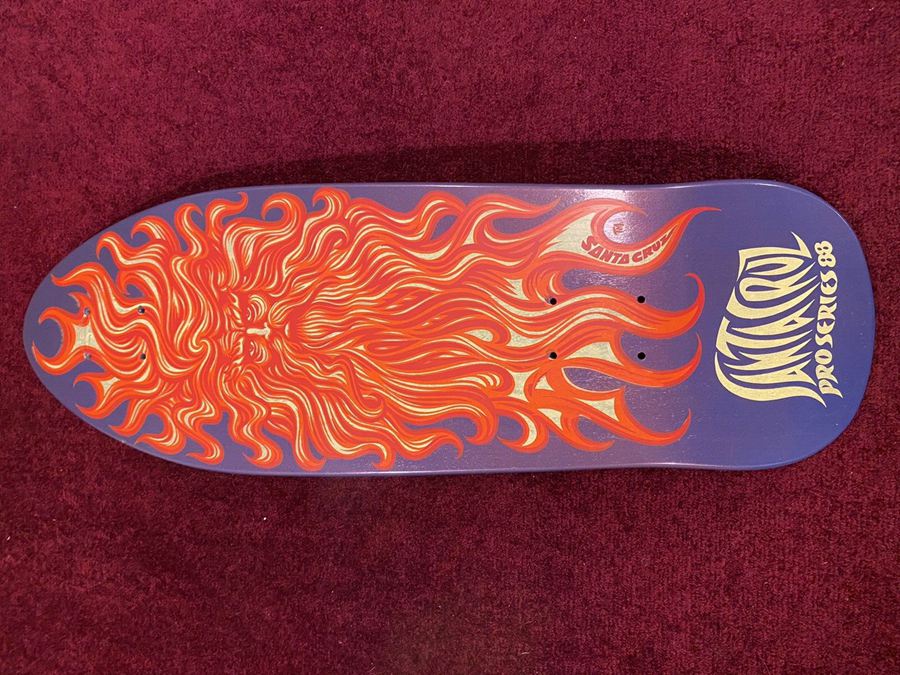
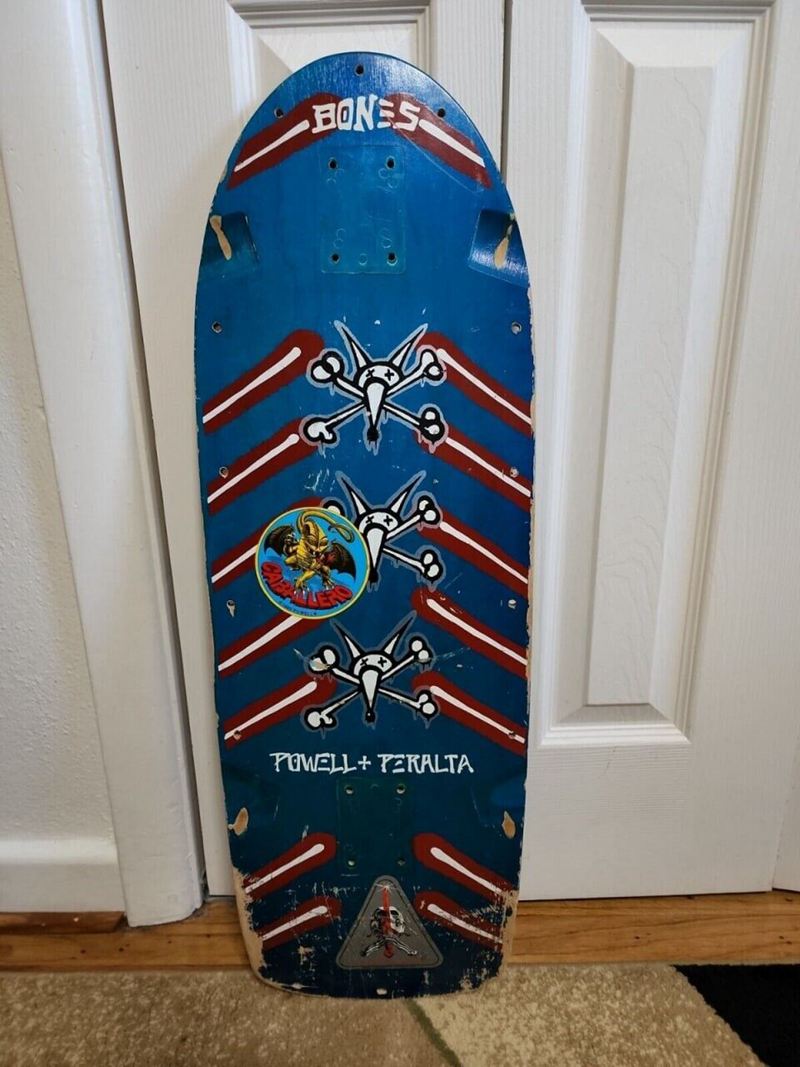
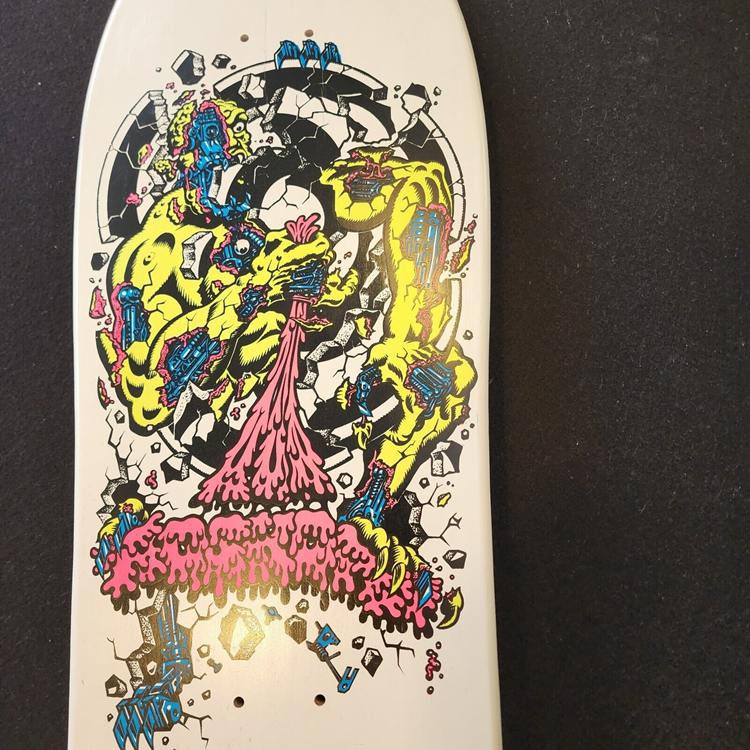
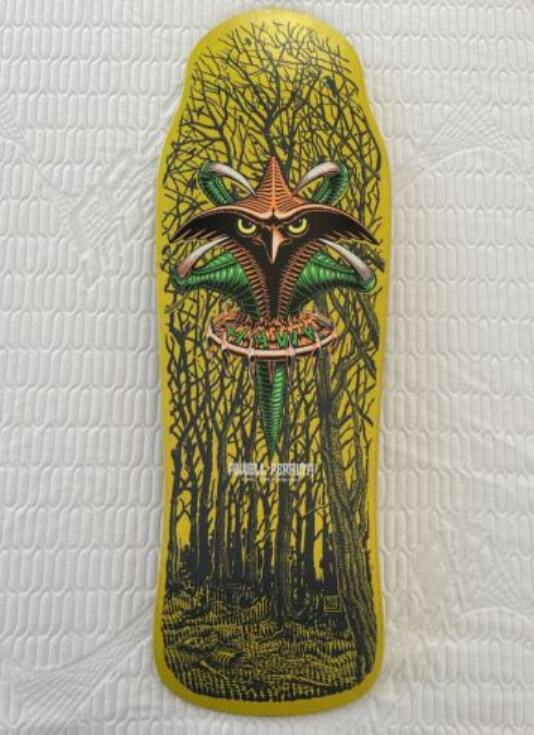




![Where To Sell Antique Furniture In 2022 [Ultimate Guide]](https://www.jacquelinestallone.com/wp-content/uploads/2022/09/Etsy-Your-Place-To-Buy-And-Sell-All-Things-Handmade-600x450.jpg)


